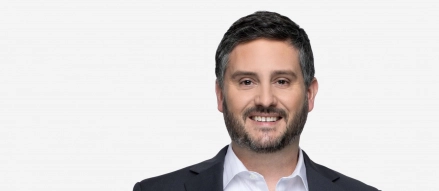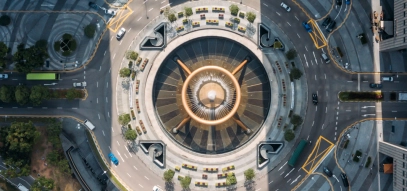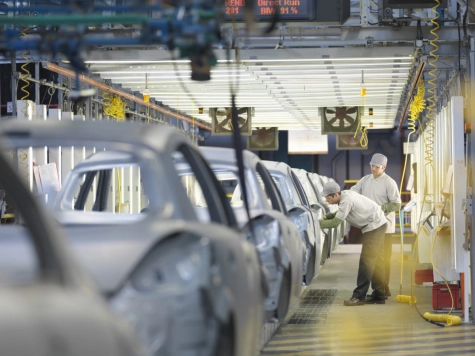This conversation has been edited and condensed for clarity.
Jeremy Rice, Mazars: The automotive sector is no stranger to change - we’ve come a long way from the Model T introduced in 1908. Then, the vision was to produce a vehicle that was affordable, simple to operate, and durable. Now, customers expect technologically enabled vehicles with low carbon footprints. Of course, these developments have to be driven by original equipment manufacturers (OEMs), which often set the tone for businesses throughout the supply chain by applying policies from regulators and, in turn, dictating the actions of suppliers further down the line. Businesses like Faurecia are not just expected to ‘keep up’ with customers but, in fact, predict new trends before they happen. How have you seen that play out with appetite for autonomous driving?
Alex van Laack, Faurecia: Autonomous driving has been part of the conversation for many years, but regulation is still a big hurdle. Liability is a major difficulty: important questions are still unanswered about who would be liable – the driver, the OEM, the supplier or other – if there were an accident. So far, there are no comprehensive laws on the matter and this is preventing autonomous driving from entering the mainstream.
There is also the human element to address: would you be comfortable driving or sitting in a vehicle you’re not controlling? Our approach to this is focusing on the levels that lead up to fully autonomous driving. Starting with assisted driving at traffic jams, parking support and integrating adaptive cruise control, for instance. Personally, my trust in vehicle technology has grown as I have spent more time gradually giving my car more control.
On your specific question about appetite, we are looking at whether the productivity argument is really the most useful way to convince drivers to back autonomous driving. I remember living in Paris and using taxis to get around congested areas because I could catch up on personal admin from the backseat. That setting makes me enthusiastic for autonomous driving – but I currently live in Michigan, where driving is easier and less stressful. Autonomous driving’s biggest advocates still need to make a solid argument for why its introduction would be so beneficial to people in all sorts of surroundings.
Trust comes first
Jeremy Rice: Autonomous driving still seems hampered by questions of safety and reliability. At the moment, autonomous vehicles must still be occupied by a driver and even if the driver is not driving, they must be alert and ready to take control if needed, similar to a pilot. What is Faurecia doing to boost safety?
Alex van Laack: From a regulatory and customer point of view, autonomous driving is all about trust. The driver has to be confident the car knows the surroundings and the state of the people in the car - like where they’re sitting and if they’re distracted. If the driver is in the backseat and cannot get to the steering wheel, the car has to be able to make informed decisions in real time. Drivers and passengers being able to do more within a vehicle leads to more potential problems. The placement of airbags and the movement of seatbelts, for instance, all need to be reimagined.
We are making that reimagining possible through partnerships. One example is our work with a supplier on seatbelts that can rotate with our seats. It’s not something we could develop in-house so we looked externally. The key to partnerships like this is to define the limits of the cooperation, to avoid any competitive overlap, and to ensure both businesses get something out of working together. If the partner business has a competing product, they can still be brought in, but make it clear from the beginning what the collaboration will cover.
Regulators receptive to progress
Jeremy Rice: OEMs have been under growing regulatory pressure over the last few years. In the US, President Biden signed in August an executive order setting a target for half of all new vehicles sold in the US in 2030 be zero-emission cars. OEMs like Faurecia have to be extremely agile given the legislative environment or they could end up making parts that are soon obsolete. Do you have any recent examples of working with regulators?
Alex van Laack: The introduction of the 2021 Hot Car Act in the US could force manufacturers to offer rear seat passenger detection. That aligns with how we are developing a radar sensor that checks the respiration rate and volume of a living being inside the car, with the possibility of alerting the driver to a potentially dangerous outcome. Government agencies are evidently receptive to innovation and we’ve been working in the US with the Federal Communications Commission on internal radar waivers and prototypes.
A greener future
Jeremy Rice: Sustainability is a big part of the future of mobility conversation and we are seeing electric vehicles enter the mainstream: Toyota, the largest automaker in the world, says it will make 15 new electric vehicles by 2025; Ford targets 40% electric car sales by 2030; and General Motors says it will only make electric vehicles from 2035. OEMs are making significant investments into more sustainable mobility but there seems to still be a long road ahead in terms of manufacturing innovation as well as customer demand. From a manufacturing standpoint, what is Faurecia doing to increase the sustainability of vehicles?
Alex van Laack: Sustainability is a C-suite priority for us; we have a dedicated sustainability group and are focusing on new fuel cells and battery packs to bring down the CO2 footprint of what we make. We are also working with new, more sustainable materials for the interior of our vehicles. And our electronic division is using active noise control to reduce the noise level in the car: thanks to this software solution we can now remove some of the heavy damping materials that weigh a car down and add to its CO2 footprint.
Predicting what happens next
Jeremy Rice: Timelines are notoriously hard to predict in our industry; there are so many different players in the car business that one day progress can seem to be at a standstill, and the next we’re accelerating to the next big leap forward. Different countries have different driving cultures and customers around the world have varying expectations of what cars should deliver – whether it be more sustainability, convenience, affordability, or all three and more. If you had to make one prediction for where car manufacturing is going next, what would it be?
Alex van Laack: I think it makes sense to stick to what technology will allow people to do with their cars. As the digitalisation of cars increases, we’ll find better ways to keep them up to date. A phone that is four years old is not that far behind a brand new one and I see cars going in a similar direction: acting as access points to digital environments thanks to the integration of mobile software, and therefore staying useful and valuable for longer than cars from a decade ago. This will have a beneficial impact on interest in and appetite for autonomous driving. With the chance to use seamless apps to game, relax and work, drivers will increasingly imagine autonomous driving is for them.
This article is part of our 'Reinventing the wheel: driving conversations' series. You can read more conversations here.









